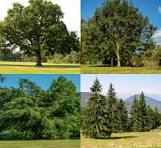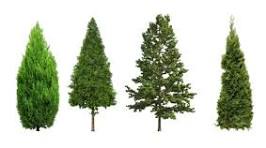
In the vast tapestry of Earth's flora, two primary types of trees, coniferous and deciduous, stand in stark contrast, each contributing to the rich diversity of our planet's ecosystems. From their distinct foliage and reproductive strategies to their ecological roles, coniferous and deciduous trees showcase unique adaptations that shape the landscapes they inhabit. This article aims to unravel the differences between these two tree types, shedding light on the characteristics that make each group remarkable. Tiger Lily
-
Foliage Characteristics: The most apparent distinction between coniferous and deciduous trees lies in their foliage. Coniferous trees, characterized by needle-like or scale-like leaves, retain their greenery year-round, providing a constant presence in their habitats. On the other hand, deciduous trees shed their leaves seasonally, with vibrant displays of autumn colors preceding a period of dormancy during winter.
-
Reproductive Structures: Another notable difference lies in their reproductive structures. Coniferous trees produce cones, which contain seeds, and often have both male and female cones on the same tree. In contrast, deciduous trees produce flowers that bear seeds enclosed in fruits, ranging from acorns to samaras, facilitating the dispersal of seeds by animals or wind.
-
Adaptations to Climate: Coniferous trees are well-adapted to harsh climates, often thriving in colder regions, high altitudes, and nutrient-poor soils. The needle-like leaves reduce water loss, and their evergreen nature allows them to photosynthesize year-round, crucial in regions with extended winters. Deciduous trees, on the other hand, are commonly found in temperate climates, shedding leaves to conserve water during colder months and avoiding the risk of freezing.
-
Ecological Roles: Both coniferous and deciduous trees play crucial roles in ecosystems. Coniferous forests, with their dense canopies, provide habitat for diverse flora and fauna, particularly in colder regions. Deciduous forests, with their seasonal leaf litter, contribute to nutrient cycling and support a wide range of wildlife. The contrasting ecological roles highlight the importance of both tree types in maintaining biodiversity. coniferous trees
-
Economic and Commercial Uses: Coniferous and deciduous trees are valuable resources for various human endeavors. Coniferous timber is often used in construction, paper production, and the manufacturing of wood products due to its strength and durability. Deciduous hardwoods, such as oak and maple, are prized for furniture making, flooring, and other high-quality applications.
-
Aesthetic Appeal and Cultural Significance: The aesthetic appeal of both tree types varies widely and often depends on personal preferences and cultural contexts. Coniferous trees, such as evergreen pines, are popular as Christmas trees and are admired for their graceful forms. Deciduous trees, with their seasonal changes, are celebrated for the vibrant hues of their foliage, influencing cultural traditions and artistic expressions.
-
Conservation Considerations: Coniferous and deciduous forests face threats from deforestation, habitat loss, and climate change. Conservation efforts are essential to protect these vital ecosystems, ensuring the sustainable management of forests and the preservation of the myriad species that depend on them.
Conclusion:
Coniferous and deciduous trees, each with its distinctive features and ecological roles, coexist in a delicate balance, shaping the landscapes we call home. Recognizing and understanding the differences between these two tree types not only deepens our appreciation for the intricate web of life but also underscores the importance of conservation efforts to safeguard the diversity and resilience of our planet's forests.


No comments yet